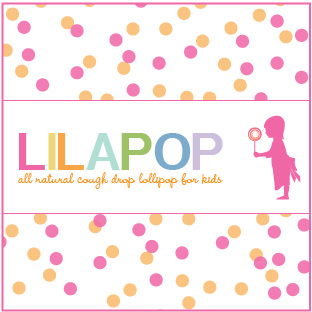
Whether you are crampy, over scheduled or just being lazy some days are harder than others to find the motivation to workout. When I don’t feel like lacing up the shoes I remind myself why I NEED to…
I am a role model for my children. I know my kids will always understand and value the importance of exercise mainly because I involve them. They don’t just see me heading out the door to the gym. They do random knee highs with me in the kitchen after we load the dishwasher. They throw kettle bells around when my trainer comes. If I am doing push-ups while watching the latest Housewives reunion – they are doing push-ups right next to me.
I am vain and I do not apologize for it. I want to have a fantatstic body. I need to workout to get and keep that body. It’s that simple.
To look fabulous in clothes. I am a lover of clothes but I do not believe everything you wear needs to be super expensive. The most important piece of an ensemble is confidence. Working out gives me that confidence.
To smile. Working out is my anti-depressant. I am unfortunately a little depressive leaning and I know that, for me, daily exercising keeps the clouds from darkening.
That’s why I workout. Why do you?
Written by Lea Barlow •
Leave a comment
I am always looking for ways to add substance to my meals without adding unnecessary carbohydrates. I have with you my beloved spaghetti squash and boiled shredded cabbage in previous posts. Recently, I have added another recipe to the mix – sauteed peppers.

1. Start with your favorite bell peppers. I prefer a mix of red, yellow and orange. The green pepper has it’s place but not in this dish.
2. Julienne the peppers. If it is just me and the hubs I use 3 peppers. If the little ones are in the mood I add in one more. Next, heat up your saute pan with some extra virgin olive oil and minced shallots and toss the peppers in on medium to high heat. If you so choose, add in a little red onion for an extra punch.
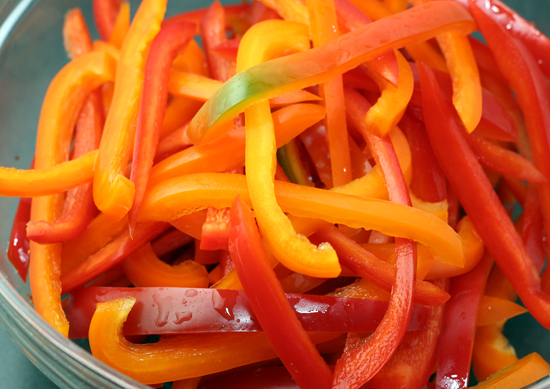
3. To make it more like a ‘pasta’ substitute, saute the peppers for about 15 minutes or until soft. Add a sprinkling of sea salt and a bit of fresh shredded parmesan cheese and top with a fish filet. Salmon is my personal preference. Once you try these sauteed peppers I promise you will be hooked.
Enjoy!
Written by Lea Barlow •
Leave a comment
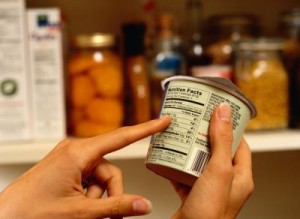 Something scary happened to me last week. If you regularly follow my blog you know that I try to eat as clean as possible but I’m not perfect. I was getting a tad bored with my regular lunch and decided to get some shaved turkey from the deli counter. I made a wonderful turkey pita with baby swiss cheese. It was delicious until about 5 minutes later when I felt nauseous and slightly dizzy. This feeling lasted about 20 minutes. I wasn’t 100% sure it was the turkey until I made the same lunch again a couple days later and immediately felt horrible. I knew my body couldn’t handle fast food or hot dogs but I was surprised that I actually had a physical reaction to Boar’s Head deli meat. The positive part of this experience is I know I am on the right track to fully eating clean. My body can no longer handle processed food. I never want to feel that way again.
Something scary happened to me last week. If you regularly follow my blog you know that I try to eat as clean as possible but I’m not perfect. I was getting a tad bored with my regular lunch and decided to get some shaved turkey from the deli counter. I made a wonderful turkey pita with baby swiss cheese. It was delicious until about 5 minutes later when I felt nauseous and slightly dizzy. This feeling lasted about 20 minutes. I wasn’t 100% sure it was the turkey until I made the same lunch again a couple days later and immediately felt horrible. I knew my body couldn’t handle fast food or hot dogs but I was surprised that I actually had a physical reaction to Boar’s Head deli meat. The positive part of this experience is I know I am on the right track to fully eating clean. My body can no longer handle processed food. I never want to feel that way again.
I found a very helpful list of the top food additives to cut out of your diet and wanted to share it with you. It is an important reminder on what to try to avoid.
1. Artificial Sweeteners
Aspartame, (E951) more popularly known as Nutrasweet and Equal, is found in foods labeled “diet” or “sugar free”. Aspartame is believed to be carcinogenic and accounts for more reports of adverse reactions than all other foods and food additives combined. Aspartame is not your friend. Aspartame is a neurotoxin and carcinogen. Known to erode intelligence and affect short-term memory, the components of this toxic sweetener may lead to a wide variety of ailments including brain tumor, diseases like lymphoma, diabetes, multiple sclerosis, Parkinson’s, Alzheimer’s, fibromyalgia, and chronic fatigue, emotional disorders like depression and anxiety attacks, dizziness, headaches, nausea, mental confusion, migraines and seizures. Acesulfame-K, a relatively new artificial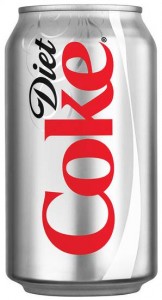 sweetener found in baking goods, gum and gelatin, has not been thoroughly tested and has been linked to kidney tumors.
sweetener found in baking goods, gum and gelatin, has not been thoroughly tested and has been linked to kidney tumors.
Found in: diet or sugar free sodas, diet coke, coke zero, jello (and over gelatins), desserts, sugar free gum, drink mixes, baking goods, table top sweeteners, cereal, breathmints, pudding, kool-aid, ice tea, chewable vitamins, toothpaste
2. High Fructose Corn Syrup
High fructose corn syrup (HFCS) is a highly-refined artificial sweetener which has become the number one source of calories in America. It is found in almost all processed foods. HFCS packs on the pounds faster than any other ingredient, increases your LDL (“bad”) cholesterol levels, and contributes to the development of diabetes and tissue damage, among other harmful effects.
Found in: most processed foods, breads, candy, flavored yogurts, salad dressings, canned vegetables, cereals
3. Monosodium Glutamate (MSG / E621)
MSG is an amino acid used as a flavor enhancer in soups, salad dressings, chips, frozen entrees, and many restaurant foods. MSG is known as an excitotoxin, a substance which overexcites cells to the point of damage or death. Studies show that regular consumption  of MSG may result in adverse side effects which include depression, disorientation, eye damage, fatigue, headaches, and obesity. MSG effects the neurological pathways of the brain and disengaged the “I’m full” function which explains the effects of weight gain.
of MSG may result in adverse side effects which include depression, disorientation, eye damage, fatigue, headaches, and obesity. MSG effects the neurological pathways of the brain and disengaged the “I’m full” function which explains the effects of weight gain.
Found in: Chinese food (Chinese Restaurant Syndrome ) many snacks, chips, cookies, seasonings, most Campbell Soup products, frozen dinners, lunch meats
4. Trans Fat
Trans fat is used to enhance and extend the shelf life of food products and is among the most dangerous substances that you can consume. Found in deep-fried fast foods and certain processed foods made with margarine or partially hydrogenated vegetable oils, trans fats are formed by a process called hydrogenation. Numerous studies show that trans fat increases LDL cholesterol levels while decreasing HDL (“good”) cholesterol, increases the risk of heart attacks, heart disease and strokes, and contributes to increased inflammation, diabetes and other health problems. Oils and fat are now forbidden on the Danish market if they contain trans fatty acids exceeding 2 per cent, a move that effectively bans partially hydrogenated oils.
Found in: margarine, chips and crackers, baked goods, fast foods
5. Common Food Dyes
Studies show that artificial colorings which are found in soda, fruit juices and salad dressings, may contribute to behavioral problems in children and lead to a significant reduction in IQ. Animal studies have linked other food colorings to cancer. Watch out for these ones:
Blue #1 and Blue #2 (E133)
Banned in Norway, Finland and France. May cause chromosomal damage
Found in: candy, cereal, soft drinks, sports drinks and pet foods
Red dye # 3 (also Red #40 – a more current dye) (E124)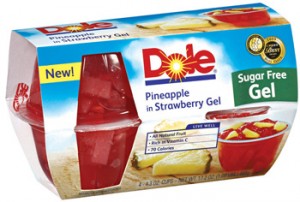
Banned in 1990 after 8 years of debate from use in many foods and cosmetics. This dye continues to be on the market until supplies run out! Has been proven to cause thyroid cancer and chromosomal damage in laboratory animals, may also interfere with brain-nerve transmission
Found in: fruit cocktail, maraschino cherries, cherry pie mix, ice cream, candy, bakery products and more!
Yellow #6 (E110) and Yellow Tartrazine (E102)
Banned in Norway and Sweden. Increases the number of kidney and adrenal gland tumors in laboratory animals, may cause chromosomal damage.
Found in: American cheese, macaroni and cheese, candy and carbonated beverages, lemonade and more.
6. Sodium Sulfite (E221)
Preservative used in wine-making and other processed foods. According to the FDA, approximately one in 100 people is sensitive to sulfites in food. The majority of these individuals are asthmatic, suggesting a link between asthma and sulfites. Individuals who are sulfite sensitive may experience headaches, breathing problems, and rashes. In severe cases, sulfites can actually cause death by closing down the airway altogether, leading to cardiac arrest.
Found in: Wine and dried fruit
7. Sodium Nitrate/Sodium Nitrite
Sodium nitrate (or sodium nitrite) is used as a preservative, coloring and flavoring in bacon, ham, hot dogs, luncheon meats, corned beef, smoked fish and other processed meats. This ingredient, which sounds harmless, is actually highly carcinogenic once it 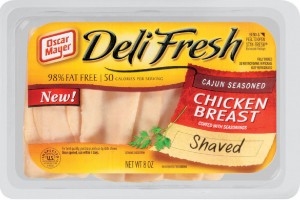 enters the human digestive system. There, it forms a variety of nitrosamine compounds that enter the bloodstream and wreak havoc with a number of internal organs: the liver and pancreas in particular. Sodium nitrite is widely regarded as a toxic ingredient, and the USDA actually tried to ban this additive in the 1970′s but was vetoed by food manufacturers who complained they had no alternative for preserving packaged meat products. Why does the industry still use it? Simple: this chemical just happens to turn meats bright red. It’s actually a color fixer, and it makes old, dead meats appear fresh and vibrant.
enters the human digestive system. There, it forms a variety of nitrosamine compounds that enter the bloodstream and wreak havoc with a number of internal organs: the liver and pancreas in particular. Sodium nitrite is widely regarded as a toxic ingredient, and the USDA actually tried to ban this additive in the 1970′s but was vetoed by food manufacturers who complained they had no alternative for preserving packaged meat products. Why does the industry still use it? Simple: this chemical just happens to turn meats bright red. It’s actually a color fixer, and it makes old, dead meats appear fresh and vibrant.
Found in: hotdogs, bacon, ham, luncheon meat, cured meats, corned beef, smoked fish or any other type of processed meat
8. BHA and BHT (E320)
Butylated hydroxyanisole (BHA) and butylated hydrozyttoluene (BHT) are preservatives found in cereals, chewing gum, potato chips, and vegetable oils. This common preservative keeps foods from changing color, changing flavor or becoming rancid. Effects the neurological system of the brain, alters behavior and has potential to cause cancer. BHA and BHT are oxidants which form cancer-causing reactive compounds in your body.
Found in: Potato chips, gum, cereal, frozen sausages, enriched rice, lard, shortening, candy, jello
9. Sulfur Dioxide (E220)
Sulfur additives are toxic and in the United States of America, the Federal Drugs Administration have prohibited their use on raw fruit and vegetables. Adverse reactions include: bronchial problems particularly in those prone to asthma, hypotension (low blood pressure), flushing tingling sensations or anaphylactic shock. It also destroys vitamins B1 and E. Not recommended for consumption by children. The International Labour Organization says to avoid E220 if you suffer from conjunctivitis, bronchitis, emphysema, bronchial asthma, or cardiovascular disease.
Found in: beer, soft drinks, dried fruit, juices, cordials, wine, vinegar, and potato products.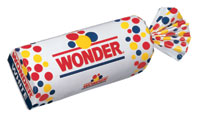
10. Potassium Bromate
An additive used to increase volume in some white flour, breads, and rolls, potassium bromate is known to cause cancer in animals. Even small amounts in bread can create problems for humans.
Found in: breads
Now you may be asking yourself what can you eat? Always go for the most natural and wholesome fresh food selections. Also, you know what I am going to say next….READ YOUR LABELS. Small changes to your diet can make a big difference in how you feel.
Source: foodmatters.com
Written by Lea Barlow •
9 Comments















